This cold-process shower soap recipe is the best ever. It makes a moisturizing yet cleansing bar with tons of lather. Please read below the recipe for tips on substations, safety, and storage, as well as step-by-step photos. If you’re brand new to soapmaking, there’s a lot to learn! You’ll want to watch the video and read the whole post before you start.

The Best Cold Process Soap Recipe
Equipment
- Safety equipment (gloves, goggles, apron)
Ingredients
- 11 ounces coconut oil
- 9 ounces olive oil
- 9 ounces palm oil
- 2 ounces sweet almond oil
- 4 ounces castor oil
- 4 ounces avocado oil
- 2 ounces mango butter
- 5.83 ounces lye
- 10-15 ounces water
- 3 tablespoons fragrance oil for a strong scent, vary this to your preferences
- 2 teaspoons sodium lactate optional, for a harder bar
- colorant or mica optional
Save This Recipe
You'll join my email list which you will love. And if you don't, unsubscribe in one click. ❤️
Instructions
- Make lye water. Using a digital scale, measure out the lye and water in separate glass containers. Combine them by adding the lye to the water. (Remember: snow floats on the lake.). Stir until the lye dissolves. The temperature will shoot up. Place this in a safe place to cool.

- Melt oils and butters. While the lye solution is cooling, measure out the oils and butters and combine them in a large stainless pot. Melt them over low heat and heat them up to 130-140 degrees. Set them aside to cool.

- Let cool. After 2 hours, check the temperature of both solutions. They should be around 110 degrees. (A range of 100-120 is fine.). If not, allow them to cool longer.
- Prep for mixing. Prepare your mold and measure out any fragrance or color you will be adding. (For best blending of colors, mix some color into a few drops of melted oils.). If using sodium lactate, add it to the lye water at this time.
- Blend to trace. Pour the water and lye solution into the pot with the melted oils. Blend with a stick blender until thin trace is reached. The soap batter will noticeable thicken and a trail of soap will sit on top of the liquid rather than immediately sinking in. (This will take about 1 minute.). Add the color and fragrance and stir by hand.

- Pour in mold. Immediately pour the soap batter into the mold. Place in a turned-off oven or wrap with blankets to insulate the soap.

- Cut bars and let cure. After 24 hours of curing, unmold and cut into bars. The bars may seem slightly soft but will harden considerably during the curing process. Allow to cure at least 3 weeks in a well-ventilated place.

Video
Notes
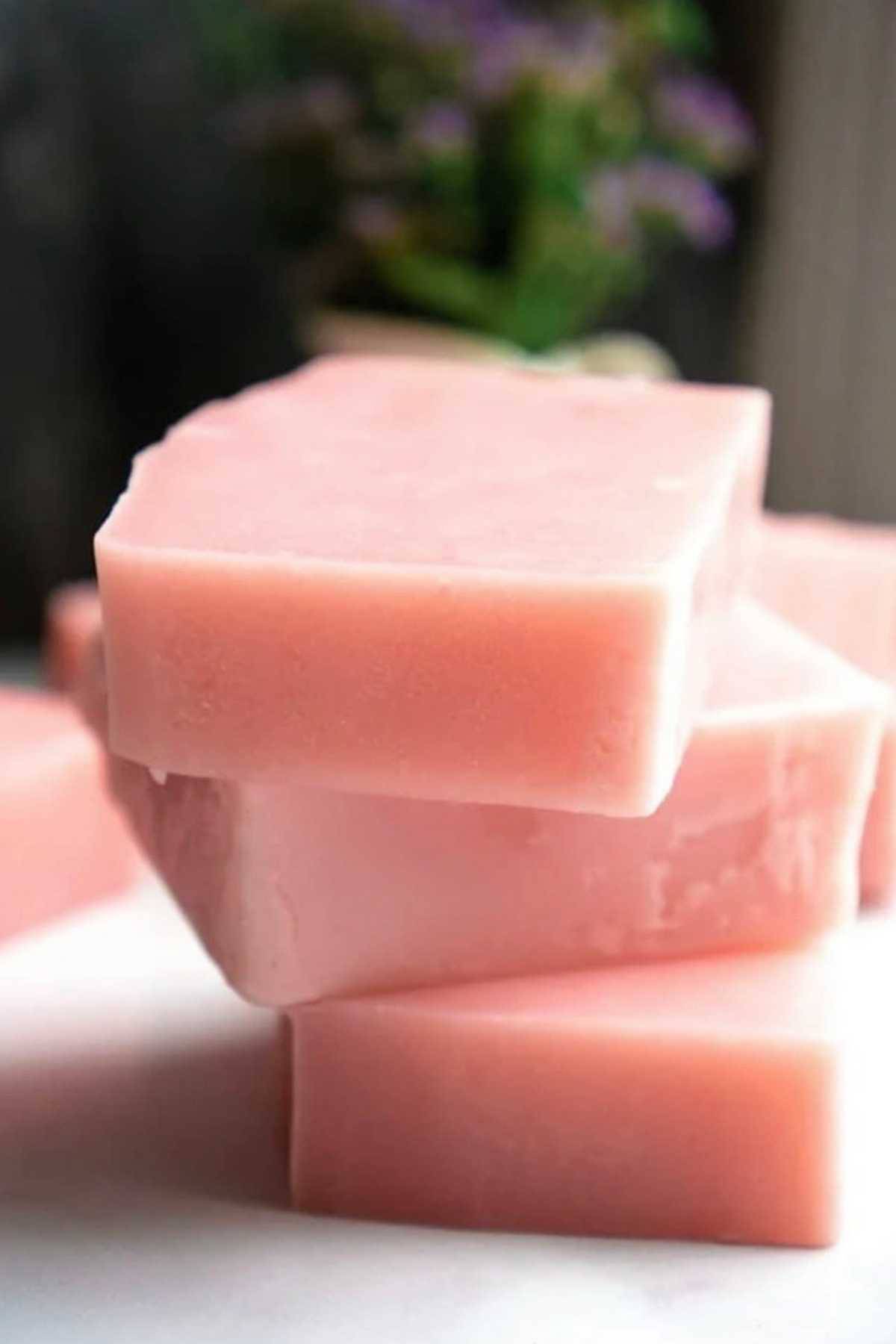
Ingredient Substitutions and Notes
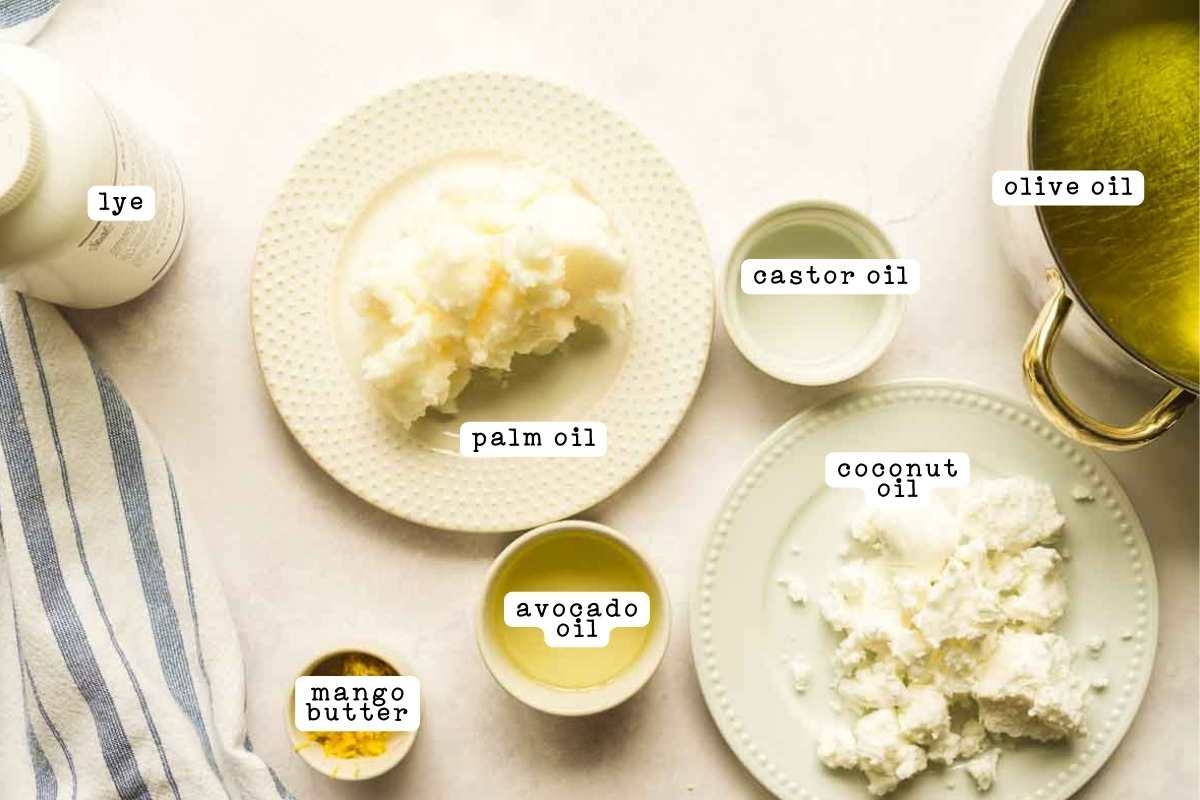
- Coconut Oil: A staple in soap making, coconut oil provides a rich lather and hardness to the soap. It is highly cleansing and can strip away excess oil, making it ideal for oily skin types.
- Olive Oil: Known for its moisturizing properties, olive oil makes the soap smoother and less drying. It’s great for sensitive skin and contributes to the soap’s gentle cleansing ability.
- Palm Oil: Adds hardness to your soap bars, helping them maintain shape and last longer. It also contributes to lather quality, though it’s important to source sustainably due to environmental concerns.
- Sweet Almond Oil: This oil is excellent for its conditioning properties, adding softness and an elegant feel to the soap. It’s suitable for all skin types, especially dry skin.
- Castor Oil: A unique ingredient that boosts lather, making your soap rich and creamy. It’s also hydrating and helps draw moisture to the skin.
- Avocado Oil: Loaded with vitamins and minerals, avocado oil enhances the moisturizing power of your soap. It’s particularly good for dry and sensitive skin.
- Mango Butter: Provides a conditioning and moisturizing effect, making the soap more luxurious. Mango butter is rich in antioxidants and can help to soothe and soften the skin.
- Lye (Sodium Hydroxide): Essential for saponification, the chemical reaction that creates soap. Lye must be handled with care, but it is completely safe once the soap has cured.
- Water: Acts as a solvent for the lye and helps to control the saponification process. Distilled water is best to prevent any impurities from affecting the soap.
- Fragrance Oil: Adds a personal touch to your soap with your favorite scents. Quality fragrance oils are designed to be skin-safe and can significantly influence the sensory experience of using your soap.
- Sodium Lactate (optional): A salt solution that makes the soap bar harder and easier to unmold. While optional, it’s beneficial for achieving a smoother finish.
- Colorant or Mica (optional): These additives bring vibrant colors to your soap, enhancing its visual appeal. They can be used to achieve a wide range of artistic effects, like swirls or layers.
Storage Instructions
Once fully cured, homemade soap should be stored in a dry, well-ventilated spot. I like to put it in shoe boxes in the closet with layers of newspaper in between the bars.
While it is in use, use a soap saver to keep your bar dry. It will last much longer.
Common Issues and Fixes
A 10-inch silicone mold. It’s my favorite for most soaps.
If your soap is too soft, it might need more time to cure. Adding sodium lactate or using oils with higher stearic acid content can also help create a harder bar.
It is a pink mica from Nurture Soap. You can find it here.
Yes, absolutely. I’d recommend using sodium lactate since it can be a bit soft when unmolding it.
This is a 100% personal preference (except for the fact that florals are more difficult to work with). My personal favorites are Comfort and Joy from Nurture Soap and Mango Mango from Brambleberry.
Yes! I used to swirl it all the time before I got too lazy.
You sure can. You’ll need the following percentages:
Coconut Oil: 26.83%
Mango Butter: 4.88%
Olive Oil: 21.95%
Palm Oil: 21.95%
Sweet Almond Oil: 4.88%
Enter them into a soap calculator with the desired size of your batch and it will give you the correct amounts.
The gel phase is a part of the saponification process where the soap heats up and becomes translucent. This can help create a smoother, more uniform bar.
Yes, essential oils can be used as a natural alternative to fragrance oils. Just be sure to use skin-safe essential oils and follow recommended usage rates.
This recipe is a great way to start, but if it’s your first time, you might want to try a more basic recipe with fewer oils. Cold process soapmaking can be complex, so starting simple is a good idea.
Distilled water is free from impurities that can affect the chemical reaction during the saponification process. Using distilled water ensures a more consistent result.
More Great Cold Process Soap Recipes:
- Mix-ins are fun! Try this gardener’s soap recipe.
- You can make your own bar dish soap.
- If you’re looking for something palm-free, try my grapefruit soap bar.
As you continue soap-making journey, remember the importance of safety, stay patient and careful, and enjoy of crafting something with your own hands.






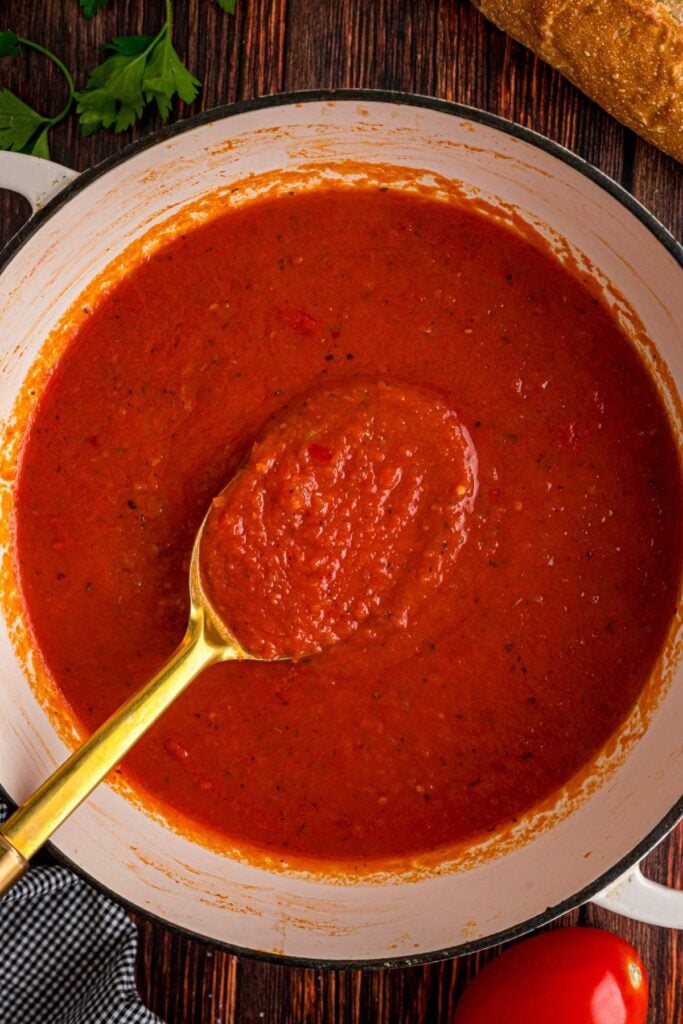

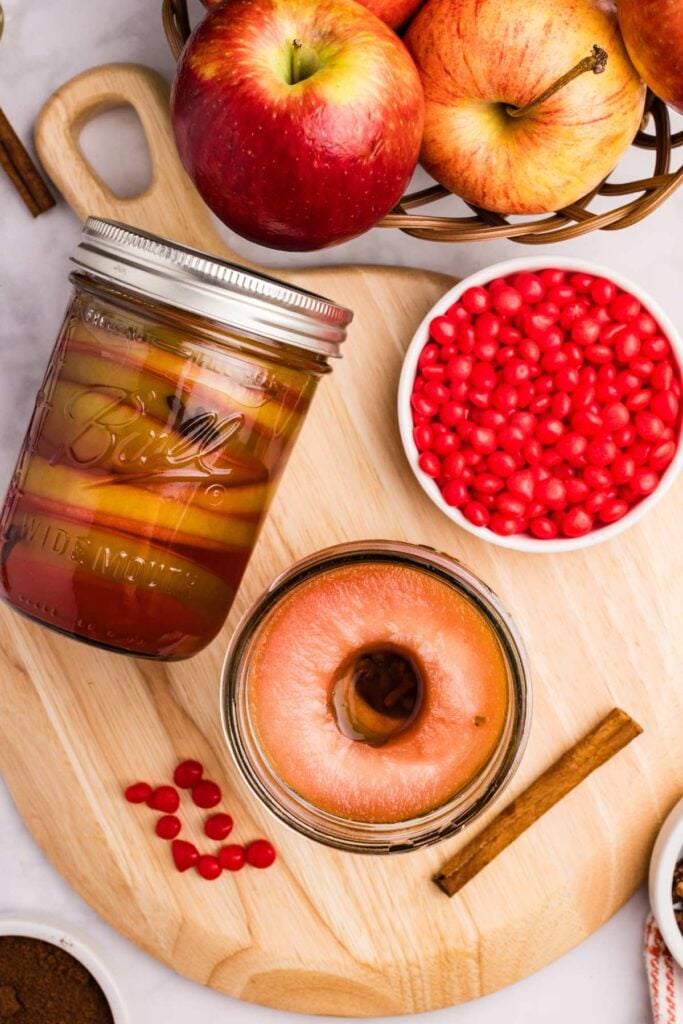
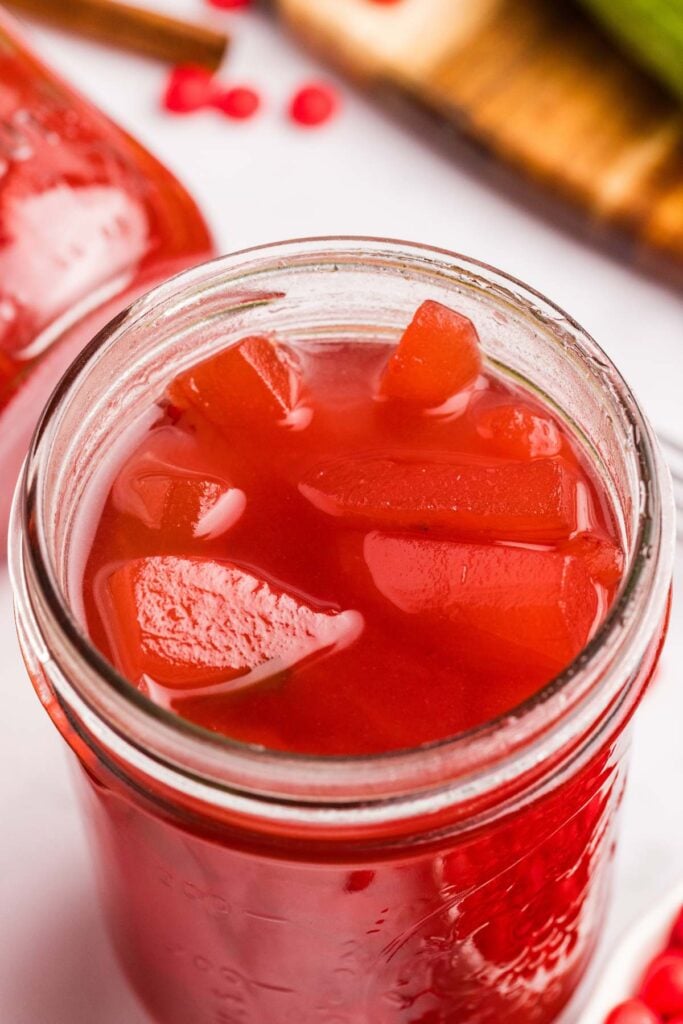
Hi Katie, thanks for the recipe! Tonight was the second time I tried making this soap and I noticed that it came to trace very quickly (about a minute?) and by the time I tried to add in my fragrance and color it had seized completely. I made sure my lye solution and oils were within ~ 5 degrees, around 105. Any idea what might’ve happened?
hi Alex, this sometimes happens to me with a floral fragrance oil. Since yours seemed to be tracing quickly before adding the fragrance, it may be that you used the lower amount of water and it traced a bit too fast. I would just increase the water towards the higher end of the range. 🙂
I’m going to make this soon. Supplies have been ordered! I’m sensitive to fragrance. Can I just leave that part out without making any other recipe adjustments? Thanks!
no just leave out the fragrance!
Hi Katie, I’m replacing the water with raw goat milk. I already know I can do this with no problems but also know you have to be careful the milk doesn’t get scorched from the lye. Any suggestions???
Thanks
try freezing it beforehand into a slushy consistency! put it in the freezer and stir every so often. 🙂
Id love to try this recipe as my first ever attempt at soaping, but was wondering if it’s ok to substitute shea or cocoa butter for the palm oil. Thanks!
hi chitsa! any time you substitute an oil in soap it becomes your own custom recipe, it’s hard to make changes without affecting the outcome. that being said, the best substitute for palm is babbasou (not sure I spelled that right!)
Best recipe I have made. I also love the way she explains it in the video.
Thank you!!
thanks Maria! so glad you’re enjoying your soap. 🙂
Looks good, but can you confirm the amount of water in this recipe? 10-15? just want to be sure. Tks Lynn
yes water is flexible in soap recipes. look up the term “water discount” for soap making for a little more information on it. I would simply use an amount in the middle. 🙂
Hi Kathie!
thanks so much for the recipe! I’ve been looking into soap making and wanting to make my own soap for a while now but I was worried it would be a great waiste of money. I have convinced me otherwise. Looking forward to trying this recipe, as well as the dish soap one. Looking forward too less heart breaking plastic garbage too! One question though about this recipe: for the fragrance, You mention in the recipe to put “3 T. of fragrance”. What is “3 T.” refering to? thanks in advance!
-Steph
Oh deer (oh dear)
Note to self: always read before publishing LOL. Sorry about the mistakes. It is: *”a great waste…” and, “YOU have convinced me”… “looking forward to…” :/
Thanks for the great recipes!!
I notice you used a glass container to make the lye solution. That is a very unsafe practice. Lye etches glass and it can literally make the container explode. Use only lye-safe materials when making soap…#2 or #5 plastic or stainless steel.
My husbands favorite soap recipe so far – he loves all of the lather.
oh I’m so glad! it IS so bubbly!
My grand babies have eczema and this looks like a great soap for that. Can I buy these oils at the grocery store? Also I want to make a wooden mold. What size will hold this recipe? Thank you for your easy to understand videos.
hi Denise! I would surprised if your grocery store had the oils. my favorite sources are Brambleberry or nurture soap. you’ll need a mold that will hold about 55 ounces. (btw, you’ll need to line a wooden mold with paper and silicone is easier to work with)
It is such an excellent recipe! It will be one of my favorites.
hi hafsa! glad you like it!
Good day I would like to check if the food color
It looks like a nice bar of soap and I love the color what color is it. I’m new to the soap world, thanks for sharing!
hi Michelle! it’s a pink mica! nurture soap has great quality ones where the color really sticks: https://nurturesoap.com/collections/micas?aff=326
How come you didn’t use a shea butter? I have never used mango butter? Is it preferred to Shea? Would love to hear your ideas on that?
I like shea butter too! I feel like mango hardens a bar a little more and feels less heavy on the skin. but not a huge difference! if you want to sub shea, that’s fine, just check with a lye calculator 🙂
I like her soap making videos
🙂
What could I replace to palm oil and almond oil with? Nut allergy, and not interested in using palm oil. Thanks!
you can try babassau oil as a palm oil substitute and do more olive oil instead of the sweet almond. you’ll need to run it through a lye calculator to see if the amount of lye changes.
I love this recipe. It’s amazing. My colors are strong and the lather is by far the best I’ve ever seen !!!Thank you for sharing!!!
oh yay! I’m so glad you are enjoying it! 🙂
On my second batch of this wonderful soap!
My whole family loves it, and my son has replaced his shampoo bar wit this soap.
thank you so much for letting me know Michelle! great tip about using as a shampoo bar since the lather is so high.
When using as a shampoo, isn’t there a concern regarding the lye content? Thank you.
hi fonda! I’m not sure exactly what you mean, there is no active lye in the finished bar. but it’s definitely possible that you’re referring to something. I’m not familiar with. typically soap is fine to use as shampoo, but let me k now if you’ve heard something. different. 🙂
I’m allergic to coconut oil. Could I just increase the palm oil to 20 oz? Aren’t they mostly interchangeable?
hmmmm I think it would be a little soft. you could certainly try it, but run it through a lye calculator first
I have a severe avocado allergy- what’s a good replacement cement for avocado oil?
I would increase the olive and almond to make up the different, then run the recipe through a lye calculator to see if the lye value changes
Thanks!